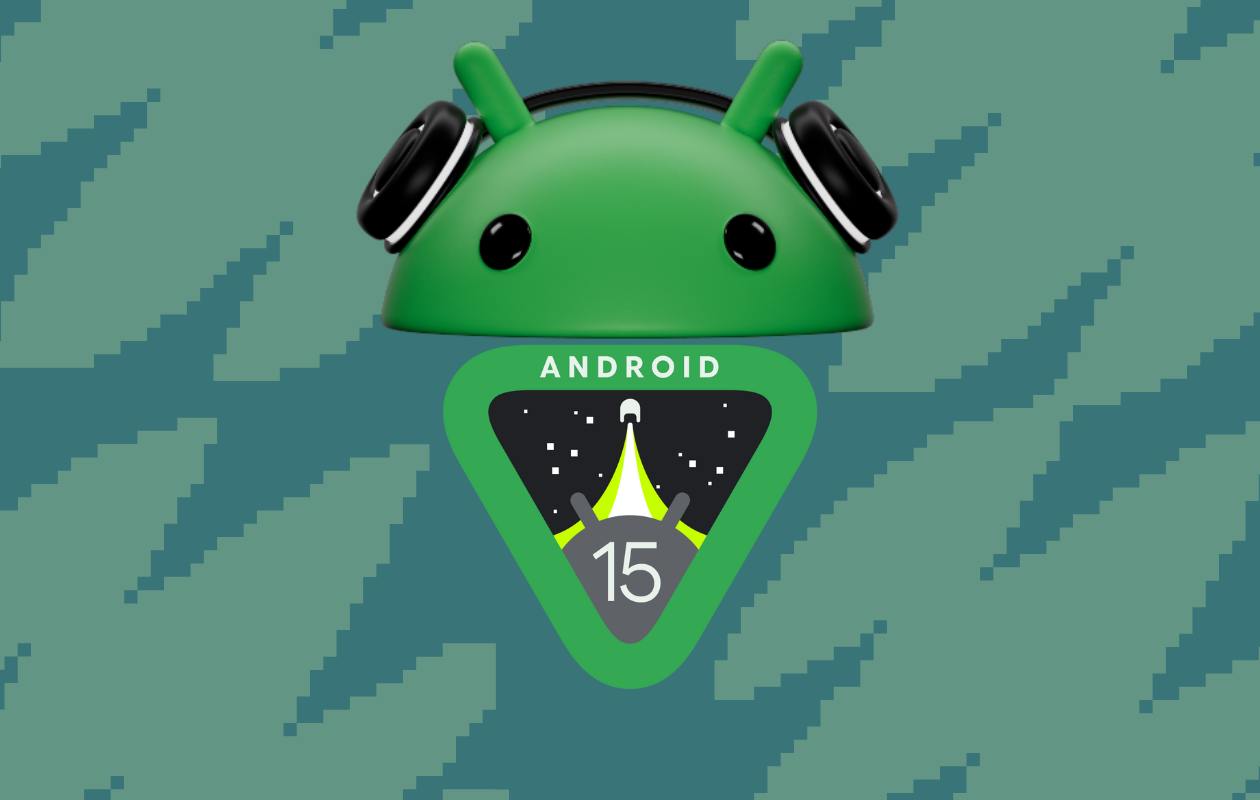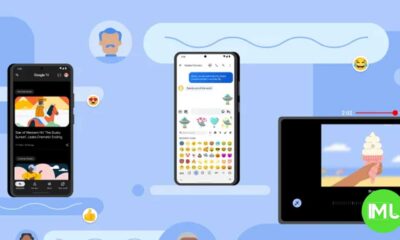Pixel
Here’s what Google Pixel 9 Satellite Pointing will work, have looks at UI
Google Pixel 9 will be equipped with a Satellite Connectivity feature, thanks to a modem upgrade. While the launch will happen later this year, Nail Sadykov discovered the interface Android will present to users when they attempt to connect to a satellite.
According to Nail, Satellite Connectivity in Pixel 9 would be a part of the Google Adaptive Connectivity Services app. The app is under development, but satisfactorily functional, with screening animation, a pointing interface, on-screen tips to establish a connection, and so on.
Users will be prompted to move the Pixel 9 to “center the satellite in the circle,” pointing to the nearest active satellite. Meanwhile, the user will be prompted regarding the requirement of a “clear view of the sky by avoiding buildings, trees, and mountains for Satellite SOS to work properly.
PiP will also be available for the feature, letting you minimize the user interface. It will allow the user to keep trying to contact emergency services apart from establishing a connection with the satellite. Google’s satellite connectivity feature will be first offered on the Pixel 9 series by T-Mobile.
Here's a first look at the Android Satellite Pointing UI
To connect via satellite you need to "move your phone to center the satellite in the circle". This UI can be minimized into a floating window which can be useful to stay connected while you texting with emergency services pic.twitter.com/V0cKY8BJ5c
— Наиль Садыков (@Nail_Sadykov) April 15, 2024
Stay up-to-date on Google Pixel, Android & Tech Stuffs by following I M Judge on X/Twitter where you can also discover the latest news, polls, reviews, and new features for Google Apps, Pixel Phones, and the Android operating system.
Do you like this post? Kindly, let us know on X/Twitter: we love hearing your feedback! If you prefer using other social platforms besides X, do follow/join us on Facebook and Telegram.
Android
Google app updates enhance navigation and focus on visual search

In the ever-evolving landscape of mobile technology, user experience is paramount. Google, a dominant force in the digital world, continues to refine its mobile app, introducing several key updates designed to enhance navigation, streamline search functionality, and prioritize visual discovery. These changes, ranging from interface tweaks to a renewed focus on Google Lens, reflect Google’s commitment to providing a seamless and intuitive mobile experience.
One of the most noticeable changes is the introduction of a new bottom toolbar within the Google app for Android users. This subtle yet significant shift in interface design aims to declutter the user interface and provide more convenient access to essential functions. Previously, controls such as closing the tab, minimizing the tab, accessing site information, sharing links, and adding to collections were all crammed into a top bar. This often resulted in a visually cramped space, making it difficult to even read the full page title.
The new bottom toolbar simplifies this experience by consolidating key actions – Save, Search, and Share – into a more accessible location. This change is particularly beneficial for one-handed use, making it easier to share articles or perform new searches based on the content being viewed. The toolbar intelligently disappears as the user scrolls, minimizing any impact on screen real estate. This new UI is currently in beta testing and is expected to roll out to the stable channel soon. It’s important to note that this update applies to pages opened within the Google app, including Discover articles and Search results, but not to pages opened through Google Lens or Circle to Search.
Beyond interface tweaks, Google is also placing a renewed emphasis on visual search with significant updates to Google Lens. Recognizing the growing popularity of visual search tools like Circle to Search, Google has redesigned the Lens experience to prioritize immediate camera access. Previously, launching Google Lens would open a gallery view, displaying existing images and screenshots with a small live preview at the top. This required an extra tap or swipe to activate the camera viewfinder.
Now, Google Lens launches directly into the camera viewfinder, allowing users to instantly capture and analyze real-world objects. This change streamlines the visual search process, making it faster and more intuitive. This update is available on both Android and iOS platforms, reinforcing Google’s commitment to visual search across its mobile ecosystem. This shift makes perfect sense; with Circle to Search becoming the go-to tool for on-screen visual searches, Lens can solidify its place as the primary tool for real-world visual exploration.
Further refinements to Google Lens include a circular preview of the last captured image, replacing the previous rounded square format. This small change adds a touch of visual polish to the interface. Additionally, Google has retained the history button, introduced earlier in the year, which allows users to easily revisit previous visual searches. These incremental improvements demonstrate Google’s ongoing dedication to refining the Lens experience.
In addition to these enhancements, Google has also been exploring advanced features within Lens. Last year, they streamlined voice input, allowing users to long-press the camera button to append text queries to their visual searches. Furthermore, through Search Labs, Google is testing video search functionality, pushing the boundaries of visual search capabilities.
While Google is making strides in mobile search and visual discovery, a recent report has shed light on the usage of in-car infotainment systems. According to the Morgan Stanley Audio Entertainment Survey, Android Auto usage has seen a slight decline year-over-year, while Apple CarPlay has experienced growth. This shift could be attributed to various factors, including users switching between Android and iOS devices or upgrading to vehicles with integrated systems that reduce reliance on Android Auto.
However, the report also reveals a significant success story for Google in the automotive space: YouTube Music. The streaming service has seen a surge in popularity among drivers, even on Apple CarPlay. This suggests that YouTube Music’s appeal transcends platform boundaries, offering a compelling listening experience for users regardless of their mobile operating system. The report indicates that YouTube’s in-car usage is on par with long-established services like SiriusXM and significantly ahead of competitors like Spotify and Apple Music. This data underscores the growing importance of streaming services in the automotive entertainment landscape and highlights YouTube Music’s success in capturing a significant share of this market.
In conclusion, Google’s recent updates to its mobile app and focus on visual search through Google Lens demonstrate a clear commitment to enhancing the user experience. By streamlining navigation, prioritizing visual discovery, and adapting to evolving user needs, Google continues to solidify its position as a leader in mobile technology. While challenges remain in the automotive sector with Android Auto, the success of YouTube Music highlights Google’s ability to innovate and capture new markets.
Android
Google addresses Pixel quirks with latest Android 15 Beta Update

The world of mobile technology is a constantly evolving landscape, with updates and improvements rolling out rapidly. For Pixel users eager to experience the latest and greatest from Android, Google has recently released Android 15 QPR2 Beta 2.1, a significant update designed to iron out some of the wrinkles reported by beta testers. This update follows a previous release in December and focuses on enhancing stability and addressing specific bugs that have been impacting user experience.
This new beta build, identified as BP11.241121.013, brings with it the December 2024 security patch, ensuring that Pixel devices remain protected against the latest security threats.1 The update is available for a wide range of Pixel devices, demonstrating Google’s commitment to supporting its diverse hardware ecosystem. The list of supported devices includes everything from the Pixel 6 and its various iterations (the Pro and 6a models) to the newer Pixel 7, 7 Pro, and 7a, the innovative Pixel Tablet and Fold, and the current flagship Pixel 8 and 8 Pro.2 Looking ahead, the update is also available for devices that are still on the horizon, such as the Pixel 8a, and the anticipated Pixel 9 series, including the Pixel 9, 9 Pro, 9 Pro XL, and the intriguing Pixel 9 Pro Fold. This expansive device support ensures that a broad range of Pixel users can participate in the beta program and contribute to refining the Android experience.
One of the primary focuses of this update is addressing several frustrating issues that have been causing devices to freeze, crash, or restart unexpectedly. These kinds of problems can severely disrupt the user experience, so Google has prioritized resolving them. Specific bug reports, identified by unique issue numbers, have been tackled in this update. These include issues that have been causing random freezes, crashes, and restarts. By addressing these core stability issues, Google aims to provide a smoother and more reliable user experience for Pixel users.
Beyond the core stability improvements, the Android 15 QPR2 Beta 2.1 update also tackles a more specific, albeit less critical, bug related to the Emoji Workshop. Users had reported an issue where the Emoji Workshop options would unexpectedly appear when selecting wallpapers from other categories within the system settings. This unintended behavior has now been corrected, ensuring a more intuitive and predictable user interface.
In addition to these specifically highlighted fixes, Google has also stated that the update includes resolutions for “various other issues that were impacting system stability and connectivity.” This suggests that the update contains a range of under-the-hood improvements designed to enhance overall system performance and ensure reliable network connections. These kinds of enhancements, while not always explicitly detailed, play a crucial role in delivering a polished and seamless user experience.
The size of the over-the-air (OTA) update is relatively small, measuring in at just 23.94 MB on a Pixel 9. This compact size makes the update quick and easy to download and install, minimizing any disruption to the user’s daily routine.
For users enrolled in the Android Beta for Pixel program, the update is delivered seamlessly over the air (OTA). This means that eligible devices will automatically receive a notification prompting them to download and install the update. This streamlined process ensures that beta testers can easily stay up-to-date with the latest improvements and contribute to the ongoing development of Android.
Google also provides factory images for those who prefer a clean installation or need to manually flash the update onto their devices. These factory images are available for all supported devices, offering a more technical approach for advanced users.
This latest beta update underscores Google’s commitment to refining the Android experience on Pixel devices. By actively addressing user-reported issues and focusing on stability and performance, Google continues to push the boundaries of mobile technology and deliver a cutting-edge user experience. The Android 15 QPR2 Beta 2.1 update is a testament to this ongoing effort, bringing a more stable, reliable, and refined experience to Pixel users.
Android
Google doubles down on open source, refines user experience across platforms

In a series of announcements, Google reaffirmed its commitment to open-source development, particularly within the Chromium ecosystem, while simultaneously refining user experiences across its Android applications and smart home devices suite. These updates reflect a focus on both foundational technology and user-centric design.
Championing Chromium: A Collaborative Effort for Web Innovation
Google unveiled a new initiative, “Supporters of Chromium-based Browsers,” in partnership with the Linux Foundation. This collaborative effort aims to ensure the long-term health and sustainability of the Chromium project, the open-source foundation upon which browsers like Chrome, Edge, and Opera are built.
The initiative establishes a fund managed by the Linux Foundation, with initial support pledged from industry giants like Meta, Microsoft, and Opera. This collaborative funding model seeks to bolster the ongoing development and maintenance of Chromium, ensuring its continued evolution and accessibility for the wider web community.
Google emphasized its substantial contributions to Chromium, highlighting over 100,000 commits in 2024, representing a significant majority of total contributions. The company also detailed the immense resources it dedicates to maintaining the project’s infrastructure, including thousands of servers running continuous tests, responding to numerous daily bug reports, and investing in code health and maintainability.
This translates to hundreds of millions of dollars in annual investment solely for maintenance, excluding any new features or innovations. Google explicitly stated its intention to maintain this level of investment, while welcoming increased participation and support from other stakeholders. This move comes at a time of increased scrutiny of Google’s role in the browser market, with some suggesting the potential divestiture of Chrome and Chromium. By highlighting its commitment to open-source and collaborative development, Google reinforces its position as a responsible steward of this critical web technology.
Refining Memories in Google Photos: A More Personalized Experience
Google Photos is receiving a series of updates designed to enhance user control and personalization, particularly within the Memories feature. Memories, which automatically curates photos and videos from the past, can sometimes surface unwanted content. To address this, Google is streamlining access to its “hide faces” functionality. Previously buried within menus, this option will soon be directly accessible within the metadata of individual images. This allows users to quickly and easily remove specific individuals from their Memories, ensuring a more pleasant and personalized experience. The update also hints at the future inclusion of a “show more” option, giving users even greater control over the content surfaced by Memories. This improvement reflects Google’s ongoing effort to provide users with more granular control over their digital memories.
Gemini on Lock Screen: Enhanced Convenience for Android Users
Google’s AI assistant, Gemini, is gaining new functionality that enhances its utility even when a user’s phone is locked. A new setting allows Gemini to make calls and send messages directly from the lock screen, providing a hands-free and convenient way to communicate. While not enabled by default, this feature can be toggled on within the Gemini app’s settings. Users can then invoke Gemini and issue voice commands to initiate calls or send messages without needing to unlock their device. This addition brings Gemini closer in functionality to its predecessor, Google Assistant, while offering a more streamlined and integrated experience.
Chromecast with Google TV Receives First Update of 2025
The Chromecast with Google TV has received its first update of 2025, bringing performance improvements and security patches. The update, while not yet delivering the anticipated Android 14 upgrade, bumps the Android security patch level to November 2024. This update continues Google’s commitment to maintaining and improving its streaming device, even as users await the broader Android 14 rollout.
Gemini Overlay Redesign: A More Compact and Intuitive Interface
The Gemini overlay on Android is undergoing a significant redesign, adopting a more compact and intuitive interface. The new design streamlines the interaction with Gemini, presenting a simplified text field with a prominent voice input circle. This redesign echoes the recent simplification of the Gemini app’s home screen, creating a more consistent and user-friendly experience across platforms.
Google Home App Finally Embraces Full Material You Design
The Google Home app is finally receiving the full Material You treatment, bringing dynamic color theming to its interface. This long-awaited update allows the app to adapt its color scheme based on the user’s chosen wallpaper, creating a more personalized and visually cohesive experience. This update marks a significant step in Google’s efforts to fully integrate Material You across its suite of applications, providing a more consistent and aesthetically pleasing user experience.
These updates across Google’s services underscore the company’s commitment to both technological advancement and user-focused design. From bolstering open-source development to refining user interfaces, Google continues to invest in creating a more robust, accessible, and personalized digital experience.
-

 Apps11 months ago
Apps11 months agoGboard Proofread feature will support selected text
-

 News11 months ago
News11 months agoSamsung USA crafting One UI 6.1.1
-

 News10 months ago
News10 months agoBreaking: Samsung Galaxy S22 may get Galaxy AI features
-

 News10 months ago
News10 months agoSamsung Galaxy S23 Ultra with One UI 6.1 and all S24 AI features revealed
-

 News11 months ago
News11 months agoOne UI 6.1 Auracast (Bluetooth LE Audio) feature coming to many Samsung phones
-

 News11 months ago
News11 months agoSatellite SOS feature coming to Google Pixel phones, evidence leaked
-

 Apps8 months ago
Apps8 months agoGoogle’s fancy new Weather app is finally available for more Android phones
-

 News11 months ago
News11 months agoGoogle Pixel evolves as Europe’s third best selling flagship






